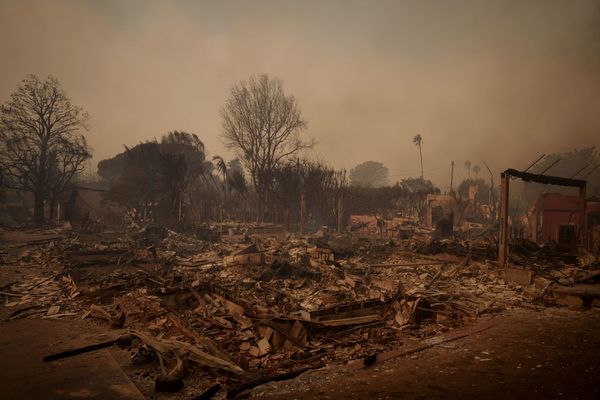
Global carbon emissions from fossil fuels have risen to record levels – fueled by India and China, according to new research.
The annual Global Carbon Budget projects fossil carbon dioxide (CO2) emissions of 36.8 billion tonnes in 2023, up 1.1 percent from last year.
Fossil CO2 emissions are falling in some regions – including Europe and the USA – but are rising overall, according to the findings published in the journal Earth System Science Data.
The findings show dramatic variations in regional trends.
Emissions in 2023 are projected to increase in India (8.2 percent) and China (4 percent), but decline in the EU (-7.4 percent), the USA (minus three percent and the rest of the world (-0.4 percent).

And there is a 50 percent chance global warming will exceed 1.5°C consistently in around seven years, say scientists.
They warned that global action to cut fossil fuels is not happening fast enough to prevent dangerous climate change.
The team explained that emissions from land-use change – such as deforestation – are projected to decrease slightly, but are still too high to be offset by current levels of reforestation and afforestation.
The report projects that total global CO2 emissions (fossil and land-use change) will reach 40.9 billion tonnes in 2023.
That is around the same as 2022 levels, and part of a 10-year “plateau” – far from the steep reduction in emissions that scientists say is urgently needed to meet global climate targets.

The research team included scientists from the University of Exeter and the University of East Anglia (UEA) as well as from more than 90 other institutions around the world.
Study leader Professor Pierre Friedlingstein, of Exeter’s Global Systems Institute, said: “The impacts of climate change are evident all around us, but action to reduce carbon emissions from fossil fuels remains painfully slow.
“It now looks inevitable we will overshoot the 1.5°C target of the Paris Agreement, and leaders meeting at COP28 will have to agree rapid cuts in fossil fuel emissions even to keep the 2° C (35.60 °F) target alive.”
The study also estimates the remaining carbon budget before the 1.5°C target is breached consistently over multiple years, not just for a single year.
At the current emissions level, the Global Carbon Budget team estimates a 50 percent chance global warming will exceed 1.5°C consistently in around seven years.
The estimate is subject to large uncertainties, primarily due to the uncertainty on the additional warming coming from non-CO2 agents, especially for the 1.5°C targets which are getting close to the current warming level.
However, the research team says that it’s clear that the remaining carbon budget – and therefore the time left to meet the 1.5°C target and avoid the worse impacts of climate change – is running out fast.
Professor Corinne Le Quéré, of UEA’s School of Environmental Sciences, said: “The latest CO2 data shows that current efforts are not profound or widespread enough to put global emissions on a downward trajectory towards Net Zero, but some trends in emissions are beginning to budge, showing climate policies can be effective.
“Global emissions at today’s level are rapidly increasing the CO2 concentration in our atmosphere, causing additional climate change and increasingly serious and growing impacts.”
“All countries need to decarbonize their economies faster than they are at present to avoid the worse impacts of climate change.”
Global emissions from coal (1.1 percent), oil (1.5 percent) and gas (0.5 percent) are all projected to increase.
About half of all CO2 emitted continues to be absorbed by land and ocean “sinks” – with the rest remaining in the atmosphere where it causes climate change.
Global CO2 emissions from fires this year have been larger than the average – based on satellite records since 2003 – due to an extreme wildfire season in Canada, where emissions were six to eight times higher than average.
Produced in association with SWNS Talker







